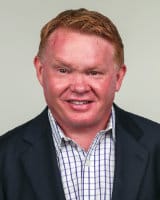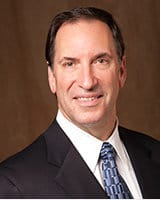
My former article discussed the pitfalls of partnerships and buy-ins which include loss of control, loss of marketability, and loss of value. These are consequences of converting a real tangible practice into intangible undivided interests.
This article describes an alternative to buy-ins, providing the benefits of buy-ins without the risks and losses that buy-ins incur.
Prior to considering any form of associateship, however, a practice must have excess production for an associate to perform. I call this excess production the "phantom practice". It may involve having more patients than an owner is capable of treating or involve referring services that an owner does not perform. My rule of thumb for an associateship to succeed requires that a practice be fully booked three weeks or more in advance, or there is a sufficient amount of referred treatment for an associate to perform. The owner also needs be able to refer "his" patients to the associate, rather than expecting the associate to build a new patient base.
This is how the alternative works. A dentist joins an ongoing practice under the terms of an associateship agreement for a five year term. The associate is paid a percentage of his collections and there is a covenant not to compete if the associate terminates the agreement or is terminated with cause. If the owner fires the associate without cause, the covenant is cancelled.
After five years, the employment contract ends and an office sharing agreement begins. We have effectively formed a solo-group practice as a result of the development of the associate's separate practice. Both practices will now share the common office and enjoy the economies of scale.
Except for the death of a party, the covenant not to compete ends. (If a surviving party does not purchase a decedent's practice, a covenant not to compete goes into effect.) Whatever practice the associate has developed during the first five year period now belongs to them. Now the owner and associate divide the total practice net income on a prorated basis of their individual production. If both parties produce the same amount, they would each be paid the same amount.
This simple plan has profound benefits for both parties. First, the associate does not have to pay a large price for an interest in someone else's practice, thus eliminating any risk, debt or liability. There is no discount in the value of the associate's practice, since the associate now owns his individual practice, not just an interest in someone else's practice.
Another benefit is that both the owner and associate can each individually manage his own personal practice. A partnership, by contrast, requires that both parties reach agreement on every issue, even when a given decision does not work for one party or the other. Our new structure allows both dentists to embark in different management directions without the agreement of the other party and without impacting them. But if the relationship does not work out for the associate, the agreement can be terminated with no debt, liability or litigation.
The owner has significant benefits. There is greater financial gain for the owner from five years of associate profits than by selling half of his practice. This approach involves selling the owner's whole "phantom practice" rather than half of his real practice. As a result, after five years, the owner will have accumulated more money and will continue to own and control 100% of his own practice. In contrast, a buy-in plan will result in the owner accumulating less money, suffering loss of control, and having ownership of only a 50% undivided interest in his practice, which is then discounted.
The principle is simple. Rather than two dentists trying to divide, own and manage a single practice, two dentists will own, manage and ultimately sell their own individual whole practices.
The first practice I structured in this fashion is still operating, but I was more concerned about the structures that ended. All relationships will end - it is not if, but rather how and when. With the solo-group arrangement, the terminations have been simple and amiable. The structure provides safety for both parties - the owner continues to maintain control and ownership, and therefore marketability and value, of his practice throughout his career. The associate gains ownership and control of his own individual practice without risk, debt or liability while also preserving ownership, control and marketability.
Any dentist considering a buy-in or partnership, whether as an owner or associate would be well-advised to understand the risks involved, as well as explore safer, easier and more profitable options.

 Add me to your address book
Add me to your address book



